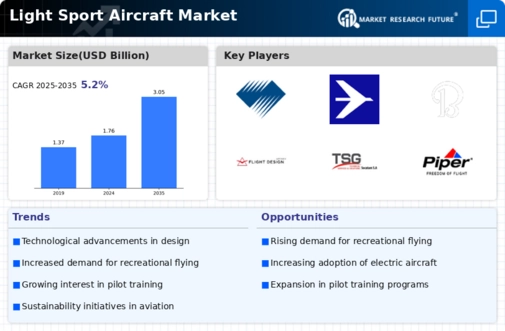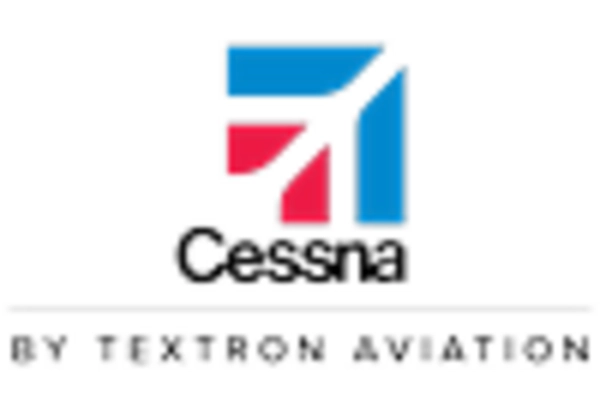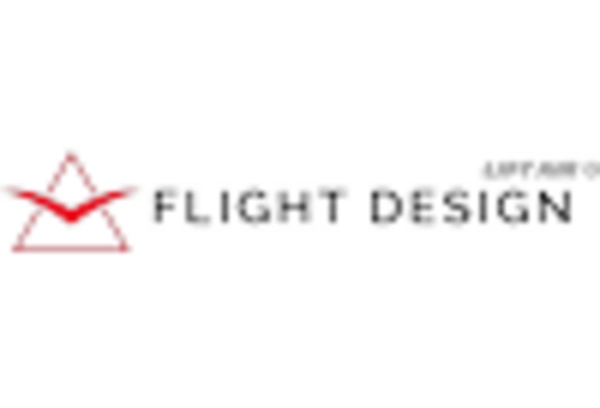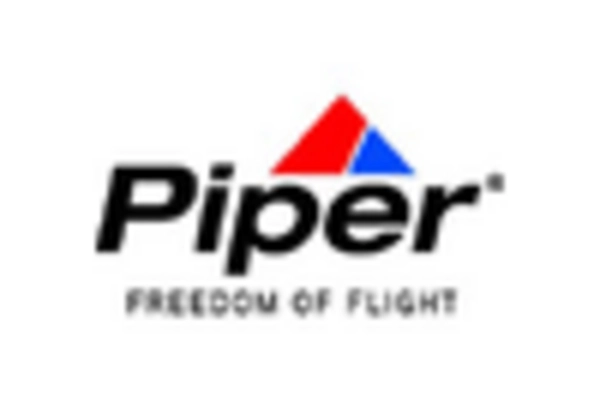Regulatory Changes
Regulatory changes play a pivotal role in shaping the Light Sport Aircraft Market. Recent updates in aviation regulations have streamlined the certification process for light sport aircraft, making it easier for manufacturers to bring new models to market. These changes are designed to enhance safety while promoting innovation. For example, the introduction of simplified pilot licensing requirements has encouraged more individuals to pursue flying as a hobby. This regulatory environment fosters a more dynamic market, as it allows for a greater variety of aircraft designs and features. Consequently, the Light Sport Aircraft Market is likely to see an influx of new models that cater to diverse consumer preferences, further stimulating growth.
Technological Advancements
The Light Sport Aircraft Market is experiencing a surge in technological advancements that enhance aircraft performance and safety. Innovations such as advanced avionics, composite materials, and fuel-efficient engines are becoming increasingly prevalent. These developments not only improve the overall flying experience but also reduce operational costs. For instance, the integration of digital cockpit displays and autopilot systems has made flying more accessible to a broader audience. Furthermore, the market is witnessing a shift towards electric propulsion systems, which could potentially revolutionize the industry by offering environmentally friendly alternatives. As these technologies continue to evolve, they are likely to attract new entrants into the Light Sport Aircraft Market, thereby expanding its reach and appeal.
Growing Recreational Demand
The Light Sport Aircraft Market is witnessing a notable increase in recreational demand, driven by a rising interest in aviation as a leisure activity. More individuals are seeking opportunities to engage in flying, whether for personal enjoyment or as part of flight training programs. This trend is supported by the proliferation of flying clubs and flight schools that offer affordable access to light sport aircraft. According to industry estimates, the number of registered light sport aircraft has been steadily increasing, indicating a growing community of enthusiasts. This burgeoning interest in recreational flying is likely to propel the Light Sport Aircraft Market forward, as manufacturers respond to the demand for more versatile and user-friendly aircraft.
Increased Investment in Aviation
Investment in the aviation sector is a significant driver for the Light Sport Aircraft Market. As investors recognize the potential for growth in this niche market, funding for research and development is on the rise. This influx of capital enables manufacturers to innovate and improve their offerings, leading to the development of more advanced light sport aircraft. Additionally, partnerships between established aviation companies and startups are becoming more common, fostering a collaborative environment that encourages technological advancements. The increased investment not only enhances the quality and variety of aircraft available but also contributes to the overall expansion of the Light Sport Aircraft Market, making it an attractive segment for both investors and consumers.
Environmental Concerns and Sustainability
Environmental concerns are increasingly influencing the Light Sport Aircraft Market, as consumers and manufacturers alike prioritize sustainability. The aviation sector is under pressure to reduce its carbon footprint, prompting a shift towards more eco-friendly aircraft designs. Innovations such as electric and hybrid propulsion systems are gaining traction, as they offer the potential for lower emissions and reduced noise pollution. Furthermore, manufacturers are exploring sustainable materials and production processes to minimize environmental impact. This growing emphasis on sustainability is likely to reshape consumer preferences, with buyers favoring aircraft that align with their values. As a result, the Light Sport Aircraft Market may see a transformation in its product offerings, catering to a more environmentally conscious audience.

















Leave a Comment